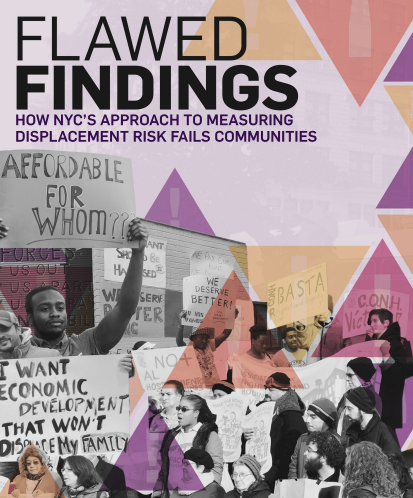The Pratt Center for Community Development revealed in a recent report that the city significantly downplays the potential risk for the displacement of residents in East New York.
Based on an evaluation of the City Environmental Quality Review (CEQR) Technical Manual, the city's guidelines for rezoning and displacement laws, the report, titled "Flawed Findings," discovers that the city disregards crucial elements to realistically assess displacement and estimates 50,000 East New Yorkers at risk.
According to the Pratt Center, the manual dismisses the unequal impacts by race and ethnicity, fails to account for low-income residents in larger buildings and disregards potential displacement caused by gentrification.
"In a city where we have a legacy of racist planning and policy, we have to look at race to make sure that we're creating systems that don't perpetuate racism," said Elena Conte, director of policy at the Pratt Center.

The city underrates the impact of rezoning by pointing to its Mandatory Inclusionary Housing policy, which promises to build affordable housing units five to seven years from now and rent for a rate that may still be out of low-income renters' reach. The report further shows that the authors of recent Environmental Impact Statements (EIS), studies that evaluate impacts on the environment as a result of city projects such as rezoning, minimize what counts as a significant impact.
"It is clear that hundreds of thousands of New Yorkers are at risk of displacement because they live without any housing or rent protections and don't make enough money to pay market rate," Brooklyn Councilmember Carlos Menchaca said. "We also know that EIS for recent rezonings concluded that displacement isn't 'significant' because these plans include mechanisms for bringing in below-market housing."
These oversights are concerning to Conte because the CEQR manual and EIS are the only municipal documents which oblige the city to address displacement risks.
"It is outrageous that the CEQR Technical Manual and the EIS are the only places where the city is legally required to look at the issue of displacement," Conte said. "The city needs to take a wider look, through a racial justice lens, at the forces which are pushing people out of their neighborhoods to develop policies that interrupt those processes, so that people can stay in their homes."
Conte's team is in discussion with the city's Charter Revision Commission to create progressive displacement policies and modify the CEQR manual.
The Pratt Center study issued a set of recommendations including a citywide displacement risk analysis to inform housing and development policy, a comprehensive anti-displacement policy agenda to protect affordable units and a task force to revamp the CEQR manual's approach to evaluating displacement.
"CEQR doesn't require the city to consider the ways that residents are vulnerable: living in unregulated housing, with extreme rent burden on fixed incomes and without other affordable neighborhoods to move to," said Albert Scott from the Coalition for Community Advancement: Progress for East New York/Cypress Hills which collaborates with the Pratt Center. "The city must measure displacement more accurately. There's too much at stake."




